The Start of Something Good!
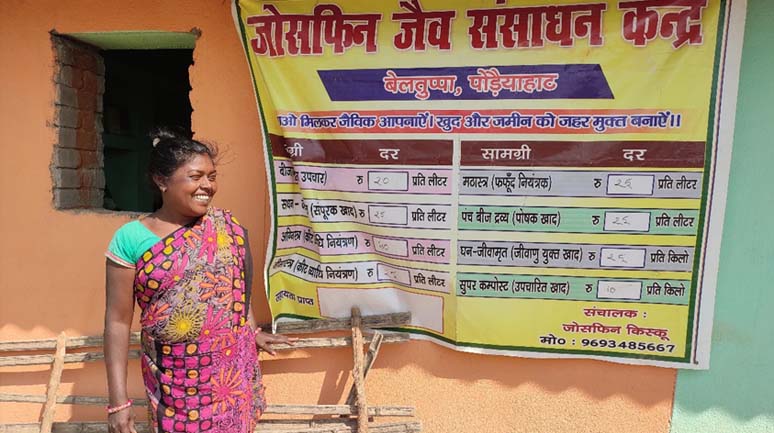
Introduction
I t was the 1960s. India was struggling with food insecurity. The growing population, limited agricultural land, climate issues like drought, and lack of innovation in new agricultural technologies were creating a situation of severe starvation in India. Something was to be done!
The Green Revolution was a period that began in the 1960s during which agriculture in India was converted into a modern industrial system by the adoption of technology, such as the use of high-yielding variety (HYV) seeds, mechanised farm tools, irrigation facilities, pesticides, and fertilizers.
India started producing crops in bulk, and we were (are!) self-sufficient now, capable of producing and feeding our growing population. However; there was also a problem lurking behind the success of the green revolution. The extreme use of pesticides and chemical fertilizers!
The struggle. The confusion.
This is the story of Josephine Kisku from Beltuppa in Poreyahat block of Jharkhand, India who decided to take a step in the right direction and fight against the overuse of chemical fertilizers in agriculture.
To care for a family of five, Josephine Kisku and her husband Sunil Besra cultivate their land of about 12 acres, and rear livestock like poultry, ducks, and pigs, earning a combined family income of Rs. 1.2 lakhs/year. Supporting her husband in these activities, Josphine Kisku had always wanted to do something by herself. She has been an active member of her Self-Help Group, working as both, AKM (Aajivika Krishi Mitra: Community Resource Person) and AE (Agricultural Entrepreneur ) to provide training and facilities at the village level for a while now.
“PRADAN floated the idea of BRC (Bio Resource Centre) in June 2021 to us. Everybody was unsure. I did not know what to do. We have been using chemical fertilisers for years now, how can we suddenly switch to organic farming? Will we get enough produce to feed our families? Where will we get raw materials for the production of BRC products? Who will buy these BRC products?”, were a few apprehensions of Josephine Kisku along with the other Agricultural Entrepreneurs.
Before we get into the details of BRC, and how it operates in the agricultural economy of a village, it is important to understand what BRC is exactly.
What is BRC?
PRADAN conceived the idea of setting up Bio Resource Centres (BRCs) owned and operated by Agriculture Entrepreneurs (AEs). With awareness and demands for bio-inputs increasing in the world and India, there was a market created for various bio-formulations that could be manufactured locally with an infusion of some knowledge and skills among the AEs. The Bio-inputs mostly used locally available materials like jaggery, gram flour, neem leaves, gaumutra (Cow urine), etc. The products manufactured and sold through BRCs include vermicompost, beejamrit, and shivansh; pesticides like neemastra and agneyastra. Some of the items such as pseudomonas, trichoderma viride, mycorrhiza, and rhizobium are sourced from local markets.
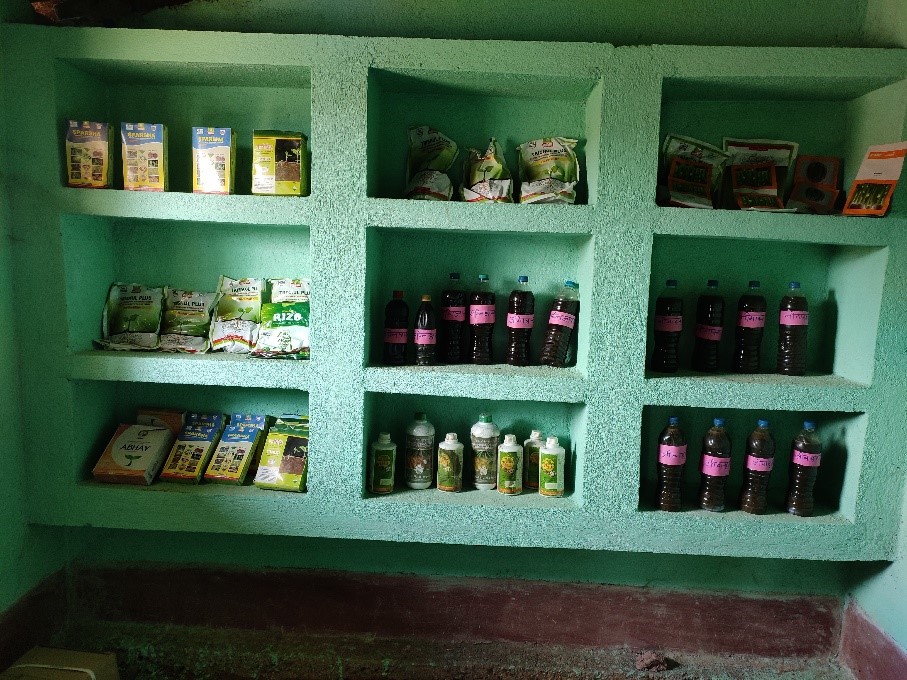
Fig. Products available at a BRC center
Introducing BRC in the villages
Initially, the idea floated by PRADAN under the Green Transformation Pathways (GTP) program supported by the IKEA Foundation and implemented through a consortium led by PRADAN, FES, MetaMeta, Rain/Aidenvironment was dealt with apprehension. Finally, a few Agricultural Entrepreneurs in the area decided to attend the training to understand the concept. The training is being organised from June 2022. Later on, an exposure visit to Madhya Pradesh in August 2022 for 14 members of the block was also organised.
The importance of BRC was realised! Josephine Kisku decided to produce the BRC products at her home. “We realise the bad effects of chemical fertilizers, the quality of soil in our land has decreased tremendously but we did not know what else to do. When PRADAN introduced us to the concept of BRC, I decided to take it up. I thought I will use them in my land if nobody buys it, I will earn a little but at least I will learn something new”.
This was the beginning of something good!
Josephine Kisku started procuring raw materials from the villagers. Earlier wasted products like cow urine or neem leaves had (has) a value now. Farmers selling these to Josephine Kisku were also earning money out of it. Also, the BRC setup is facilitating a circular economy as the model of production and consumption involves sharing, leasing, reusing, and recycling the existing resources and products as long as possible is happening.
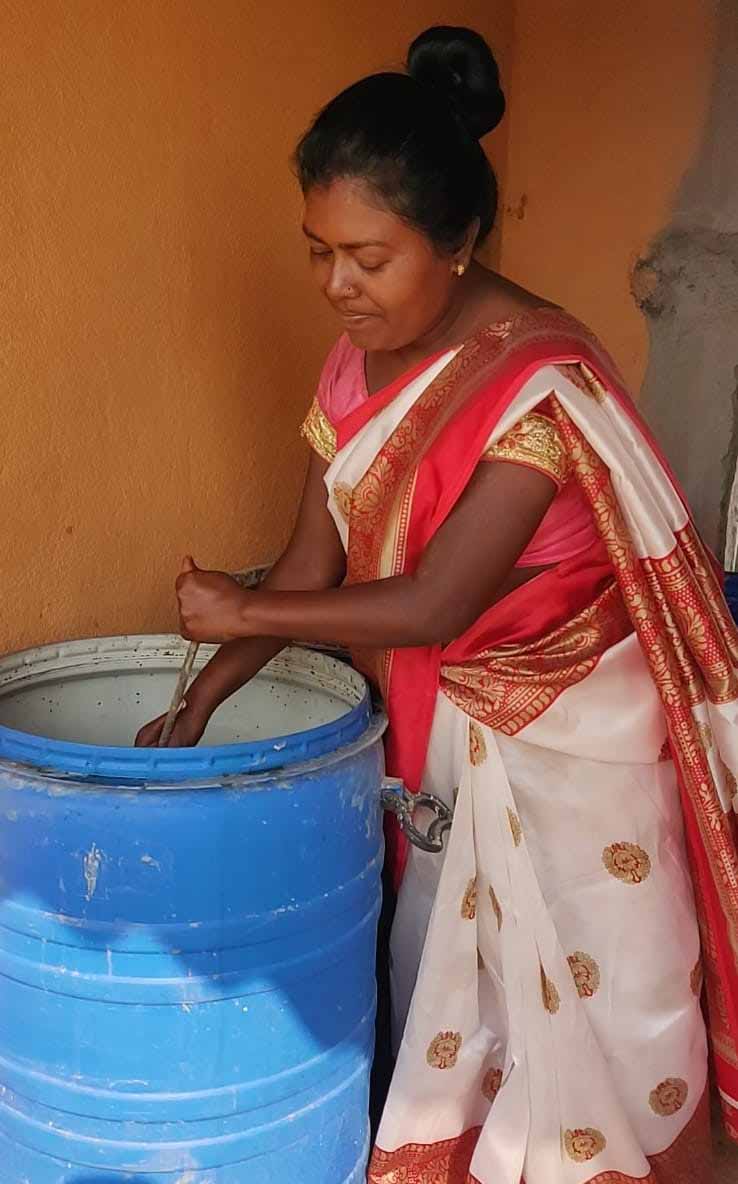
Fig. Josephine Kisku: Preparing BRC products
Josephine Kisku is being provided with all the technical support under the project. All of the training, support, and raw materials (at the initial stage) were provided to Josephine Kisku to start her business.
She shines (despite the struggles)!
The creation of a market to buy organic fertilizers is tough. “Even with the awareness around the harmful effects of fertilizers on the soil and on health, the farmers use the same as they cannot compromise on productivity”, says Ranuka Kisku. Executive, PRADAN while discussing the difficulties in creating the BRC products market.
Josephine Kisku started visiting SHGs (Self-Help Groups) and CLFs (Cluster Level Federations) to make farmers aware of the new organic fertilizers that she is making. She is also helping and training fellow farmers in the village to take up organic farming and regenerative agriculture. “In September 2022, the leaves from chilli farms of one of the women farmers started dying forcing her to discard her entire crop. I asked her to use BRC fertilisers once or twice and check if something happens. We saved her chillies”, says Josephine Kisku with pride while narrating the story of how she could save the chillies of a women farmer with the help of her BRC products.
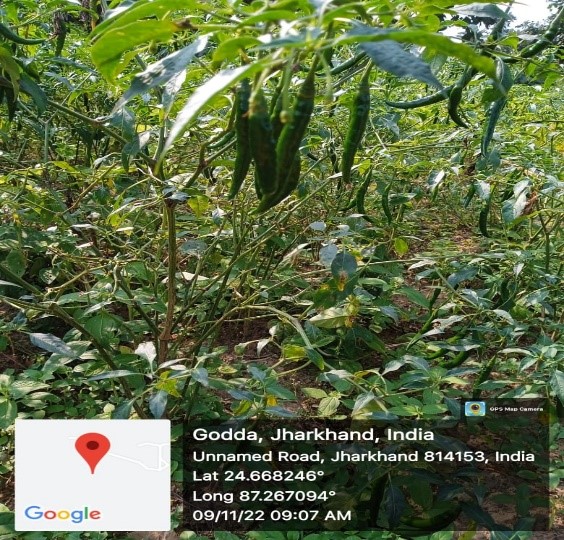
Fig. Chilli plantation treated with BRC products
The stories of her producing these products are reaching far areas. She has sold her product in 10 villages till now earning Rs. 9,000 since September 2022. She aims to earn a minimum of Rs. 1 lakh per year in the future by spreading her business to more villages and panchayats.

Fig. Josephine Kisku at the front of her shop
The farmers using these products are also reporting an improvement in water retention capacity and the quality of the soil. “Using BRC products has several benefits. Not only it improves the soil quality but also it will bring back the insects and other natural organisms earlier present in the soil which helps with better productivity”, informs Renuka Kisku. A deeper analysis of the trend of the farmers buying the BRC products tells that the farmers are also giving it a try as they are a cheaper investment as compared to the chemical fertilizers (the continuous availability of these in the market is also a challenge!).
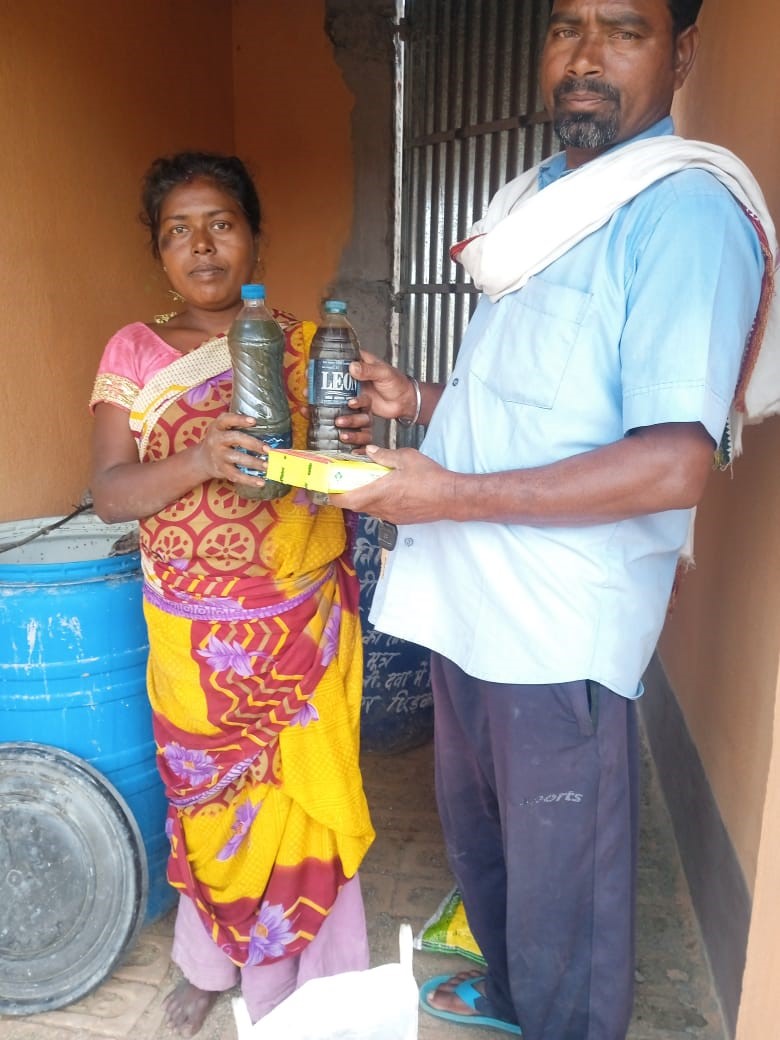
Fig. Josephine Kisku selling BRC products to a farmer
The Challenges
“Organic farming takes a minimum of two to three years of investment (financial, behavioural, marketing, etc.) to show proper results. The villagers do not want to give two to three years as they are already struggling with low incomes and cannot afford even lower earnings for consecutive years even if it will yield results later”, says Rakesh Kumar Deputy Project Director, ATMA (Agriculture Technology Management Agency), Godda. The government has set up several institutions with regard to understanding the needs of the traditional agricultural system and is conducting research & training around it. Institutes like KVK (Krishi Vigyan Kendra) and ATMA are one of the several stakeholders involved in implementing regenerative farming and BRC in the villages but the challenges remain. The risk-taking capacity of the farmers remains low!
Another added woe to the adoption of BRC in rural areas is the lack of proper marketing linkages for the product which is unanimously accepted by all the stakeholders including the government and the community members. “Marketing is a problem for now. Since not a lot of people know about this, the selling of the product also reduces”, says Josephine Kisku.
It also must be noted that despite prioritising women to lead these BRCs, right now only 2 out of 9 women own BRC centers in the area. The women even after working on their farmlands as an equal to men do not consider themselves a farmer.
Way Forward
Even with several challenges, the future of BRC in Godda looks bright. The future plans of Josephine Kisku include reaching out to different SHGs (Self-Help Groups), CLFs (Cluster Level Federations) and giving training around regenerative agriculture, and getting farmers acquainted with the idea of BRC. She also plans to open a shop in the market of town for better marketing and to make it easier for villagers to access these products.
“Now, even if PRADAN takes itself out of the ecosystem, I will continue working around BRC”, says Josephine Kisku happy with her selling, improved quality of soil in her own backyard as well as others with whom she sold the product.
For PRADAN, it plans to create more BRC entrepreneurs, increase the demand for BRC products so that the quality of soil improves, and also, people like Josephine Kisku to find a market to sell their products. And for all the other stakeholders including the community members and the government, it is time to work together to negate the bad effects of chemical fertilizers while continuing to maintain the productivity of the agricultural land.
The future awaits!
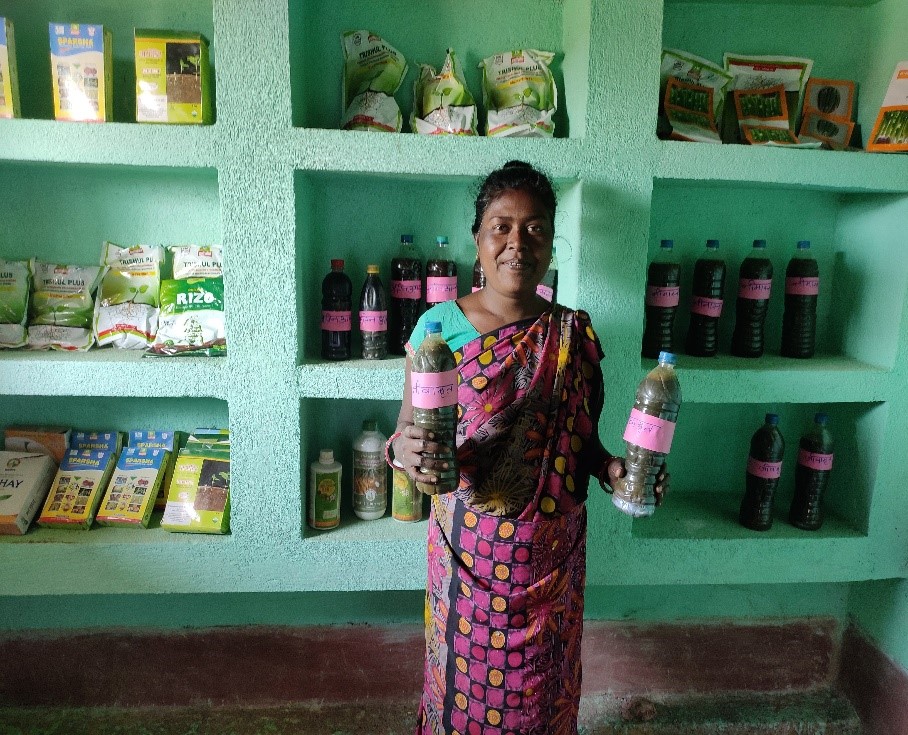
Fig. Inside Josephine Kisku’s shop

